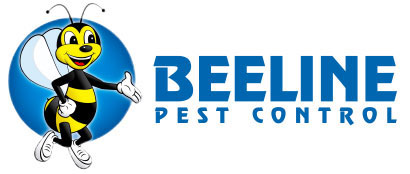Termite Damage and How to Prevent It
What You Need to Know About Termites.
Termite damage in Utah is common. These insects can potentially be a serious problem. They seem to strike fear into homeowners bringing on visions of an insect army chewing down their walls and marching portions of their house away. This is enough to frighten anyone. What’s more, the insects are so small and hidden that they go unnoticed until permanent damage has already occurred.
Termites are similar in size to ants. They are categorized into three major groups, subterranean, dampwood, and drywood. Subterranean is the most common group. 95% of all termite damage in North America is caused by this group. Each year, the overall damage done by all termites is over $2 Billion dollars. These pests don’t mess around.
The subterranean termite is the major threat in Northern Utah as well as the St. George area. Termites live off cellulose. This makes them very unique. As not many other organisms share that livelihood. Homes are made of lumber. Cellulose is the major component in the structural wood and decorative components of homes. Termites are constantly looking for their next meal, and your house is a huge easy target.
Recognizing Subterranean Termites
- Workers: Cream coloring without wings, about ¼ inch or less in length.
- Soldiers: Creamy white with a brown head. No wings, large mandibles (jaws), they defend the termite colony
- Swarmers: Dark-brown to black in color, 2 pairs of wings, about ¼ to ½ inch long
Although wood is their main diet, they will also feed on paper, insulation & even sometimes plastic. Occasionally they will infest living shrubs and trees. More commonly though they feed on those plants already dying. This is beneficial in speeding up the decay and decomposition process.
Signs of Possible Termite Damage
Below are some common signs of a subterranean termite infestation. An irregular pattern of mud-like material.
- Damaged wood: Visible material that looks like sawdust, carvings or tiny holes in wood, buckling paint
- Mud Tunnels: Subterranean termites connect the nest (moisture) with the food source (wood) using “mud tubes” they build in the ground.
- Piles of wings: Termites shed their wings as they move into their next phase.
Getting Rid of the Termites
Keep your yard clean, especially close to the house. For example, do not leave any wood scraps, lumber, or firewood on dirt. Properly dispose of waste lumber, tree trimmings, and remove tree stumps. All these materials attract termites and can sustain colonies. As a result, your home would be the next choice to establish a colony. Schedule a thorough termite inspection on your house by a pest control professional trained to detect the very subtle signs of termites.
More importantly, it will require special skills to remove termites. Knowing termites and building construction is necessary to identify points where the termites can access, nest, and where they will most likely create damage. These critical areas are difficult to access and are often hidden. Consequently, it is best to leave termite damage and treatment to the professionals. With effective termite control, specialized equipment is utilized to completely eradicate these damaging pests.
In states such as Utah where termites are active and widespread, it is imperative to begin and maintain termite prevention and termite control program that is efficient and effective. If you are a resident of Northern Utah or the St. George area, talk to the experts at Beeline Pest Control. We have quality methods to protect your home from termites, termite infestations and termite damage. Call today (435) 986-7102.



